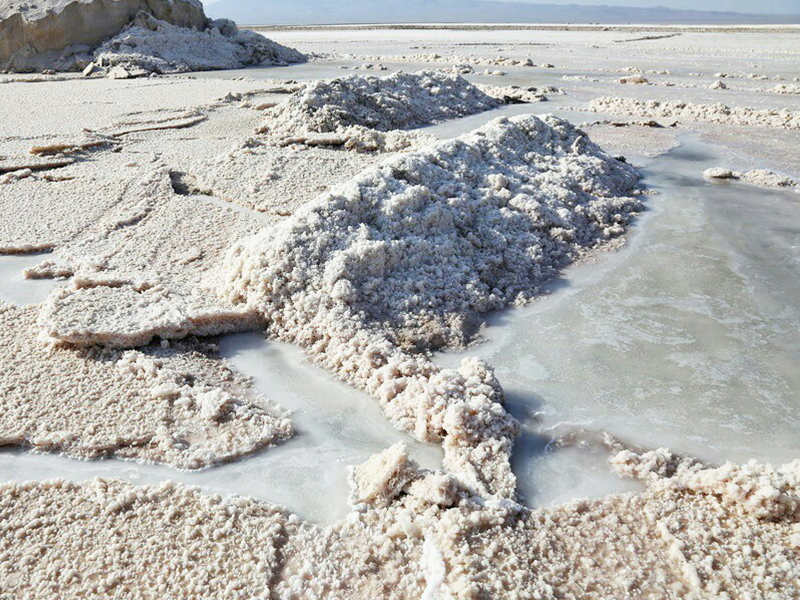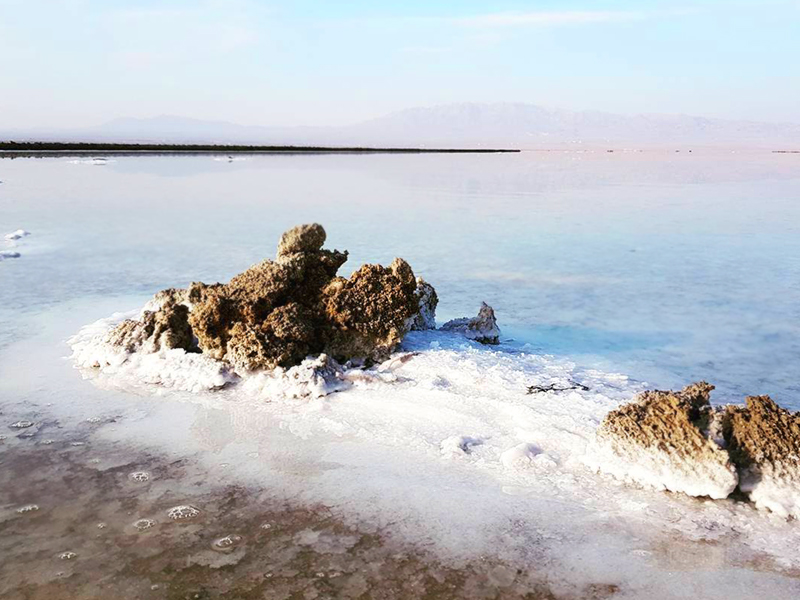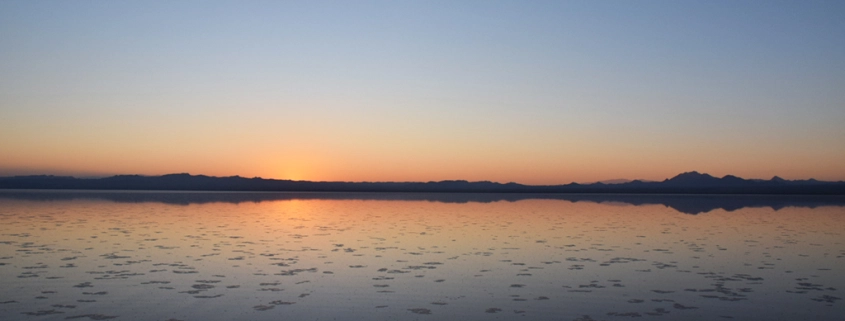Namak Lake in Iran (History, Timing, Map, Photos)
Salt lakes are one of the natural gems found in Iran. These phenomenal lakes are located in different cities of Iran from the northwest and central part of the country to the south, and even the lakes located in the Persian Gulf. Amongst the natural areas of Iran is the renowned Hoz Sultan Salt Lake (Namak Lake), which is a short distance from the capital city, Tehran. Being known as the largest Salt Lake in Iran, Hoz Sultan Salt Lake is one of the must-see sightseeing places in the city of Qom.
About Namak Lake Iran
Namak Salt Lake, or Hoz Sultan Lake, which is also known as “Royal Lake,” with an area of approximately 240 square kilometers, is located in the south of the Alborz Mountain range. The size and shape of the lake are different according to the water input and the amount of rainfall in different seasons of the year.
In this way, the water level of the lake fluctuates continuously. This lake consists of two separate pits. The western pit is called “Sultan Pond,” and the eastern pit is called “Mareh Pond,” which are both connected via a waterway. In the rainy season, the Mareh Pond is first filled with rainwater, and later, the excess water pours into the Sultan Pond.
Rivers Flowing into the Lake
Namak Lake is like a giant mirror in the heart of Iran. This Lake is 820 meters above sea level, which is almost the same height on the entire surface of the lake. Numerous rivers flow into the Namak Lake, which usually passes through the surrounding salt marshlands. The most common rivers that flow into the Namak Lake are “The Shur River” and “Qareh Chai.”
What Does Namak Mean?
A dirt road that is 35 kilometers from Qom-Tehran leads to the lake. There is also an embankment road inside the lake, which is used to prevent cars from sinking into the swamp and extracting the salt present in the lake.
This lake is often called Namak Lake instead of Hoz Sultan since “Namak” translates to “salt” in Persian, and this is due to the existence of abundant salt in this lake. Nevertheless, this Salt Lake covers a wide area in the southeast of Qom. Every year, large amounts of salt are extracted from the Hoz Sultan Lake.
The Two Appearances of the Lake
The Namak Lake of Qom has two incredible outward appearances and is one of the top things to do in Qom city. The size and shape of the lake vary according to the water input and the amount of rainfall in different seasons of the year. Therefore, when it rains and the snow melts in the Zagros highlands, there is a relatively cool lake full of salty water. Later, when the weather gets warmer, the lake water evaporates, and the salts buried beneath the surface of the lake are revealed.

Due to the extreme temperature difference between day and night, weathering occurs, and the rocks in the lake gradually crack and break apart. These rocks then turn into pebbles and sand. Only during winter does Namak Lake bear water. In the hot seasons of the year, the lake bed looks like a salt crust because the water evaporates in hotter days of the year.
This unique region is highly crucial in terms of biological sciences, ecology, paleontology, weather, and climate.
Best Time to Visit Namak Lake
The best season to visit Hoz Sultan Lake is early spring and mid-autumn. During these periods, tourists will be safe from the scorching cold of the desert and its excruciating heat and can enjoy its boundless beauty.
Namak Lake History
According to historical findings, Namak Lake did not exist before 1883, as well as the road that currently exists connecting Tehran and Qom. However, in those years, a man named “Amin al-Sultan”, who owned many land properties in that area decided to change the transit route between Tehran and Qom in a way that would be beneficial to him and for the prosperity of the market and his estates.
For this purpose, by his order the dam nearby and on the river Shur was to be broken. Later, the water that was held behind this dam was to cover the path. The removal of the dam gradually allowed the water to pour into the two pits of Sultan Pond and Mareh Pond.
In regards to the naming of Hoz Sultan Lake, we can say that the name of “Sultan Pond” is taken from the name of a nearby caravanserai, which was active in the era of Sultan Sanjar Seljuk.
Before the Tehran-Qom route was changed, this caravanserai was used for travelers to rest and live in the middle of the route. In the later years, the building complex was rehabilitated during the Safavid and Qajar dynasties, but the said route remained abandoned.
Accessing Namak Lake Iran
To reach Namak Lake, there are two access routes. The path depends on which route you are on. If you want to go from Tehran to Namak Lake, you have to travel about 70 kilometers.

After traveling along this route, you will come across a tourist sign that takes you to the other side of the highway from the underpass on the same side. In there, you will see a path that leads to Cheshmeye Shur village. If you continue this path, you will reach Namak Lake.
Note that if you want to travel the route to the lake with your car, you should be aware that you cannot reach the end of the route with any car.
Another point is that there are swamps in some parts of the land, and there is a risk of your car getting stuck in them, so it is best to take the route with caution and prior knowledge.
Sightseeing Areas in Namak Lake
The wildlife of Qom Namak Lake is very unique and spectacular. Different bird species like Bustards, pigeons, migratory birds such as gray geese, Ruddy shelduck, storks, different kinds of eagles, and many other non-native birds are among the most wonderful wildlife in Qom. Some mammals also live in the salty soil of the region. Animals such as rabbits, rats, foxes, and even deer have been seen in the surrounding fields.
Things to Keep in Mind Before Visiting Namak Lake
Never travel alone to Namak Lake.
Due to the presence of specific deep holes in many places in the region, there is a possibility of drowning in Namak Lake.
There are no amenities, shops, or accommodations in the area of Namak Lake.
To advance to the heart of the lake, you have to cross a muddy path; therefore, you will have salt marks on your shoes and clothes while walking in the area. Therefore, avoid wearing formal shoes and pants.
To visit Namak Lake, you will need complete desert climbing equipment.
When visiting the lake, avoid passing through unknown paths.
Avoid harming the nature of Namak Lake and be diligent in preserving its unique ecosystem.
Visiting Hoz Sultan Lake is free of charge.
Hoz Sultan Lake
Travelers will be able to walk through the lake on their trip to Hoz Sultan Lake. Due to the low depth, high sediments, and muddy and swampy surface, it is not possible to sail or travel with safari vehicles in this area. However, cycling is considered one of the best recreations in this region and gives you a different experience of cycling in Iran.

It is possible to visit the world’s largest natural mirror in Hoz Sultan Lake, which can lead to the creation of fabulous images by professional photographers.
Namak Lake is one of Iran’s best bird-watching destinations, and this activity is considered a suitable option for nature and wildlife enthusiasts.
Namak Lake Map
Here’s Namak Lake Map for those curious about its location and surroundings.
Final Word
Traveling to these Iranian salt lakes, considering that we are facing a path of Iranian white gold, has an extraordinary beauty that will calm the mind of every tourist, especially walking on these lakes barefoot can also give you a sense of therapeutic effects.
Are you planning to travel to Iran and looking for an Iran resort? Consider Matinabad Eco-resort.





Leave a Reply
Want to join the discussion?Feel free to contribute!